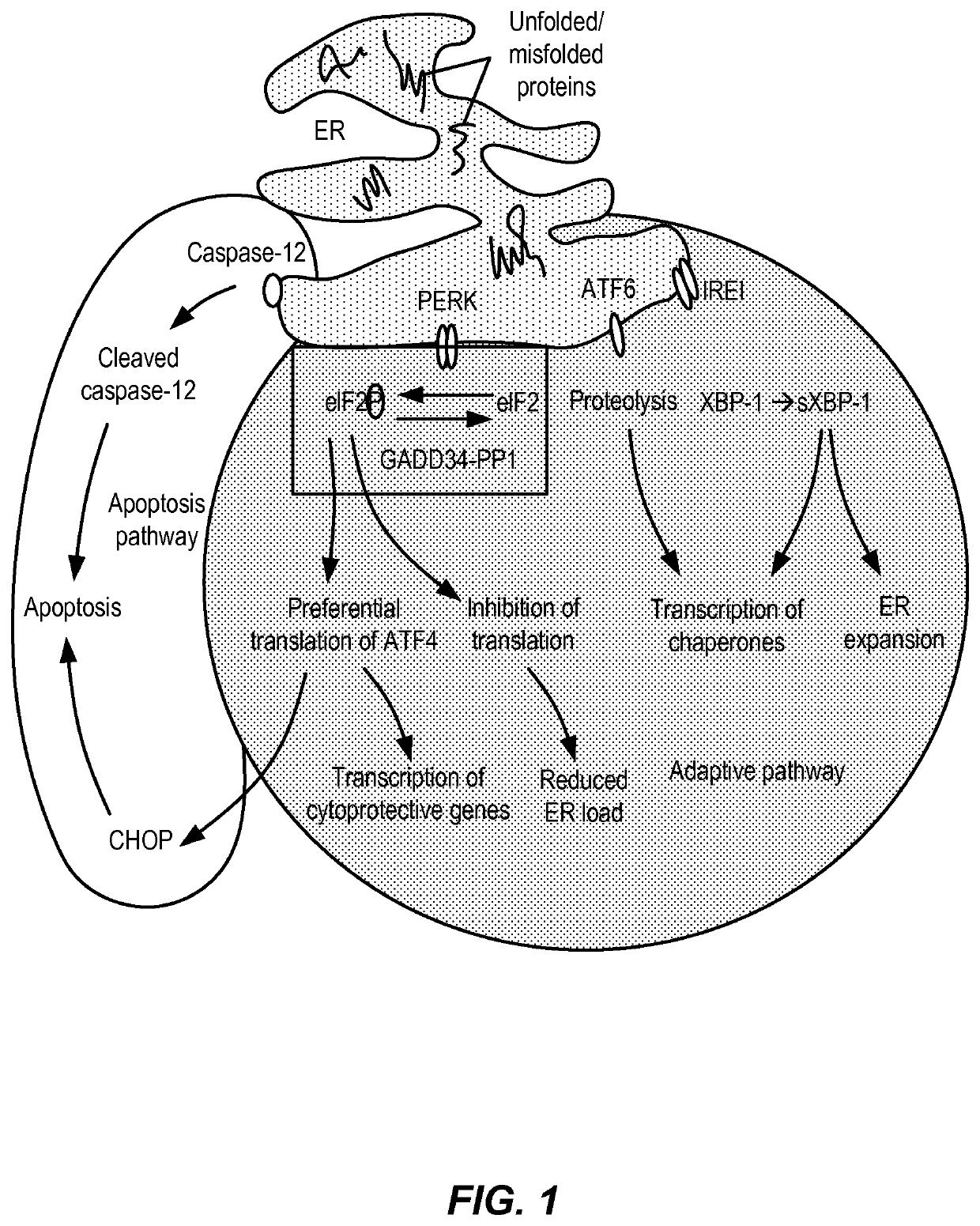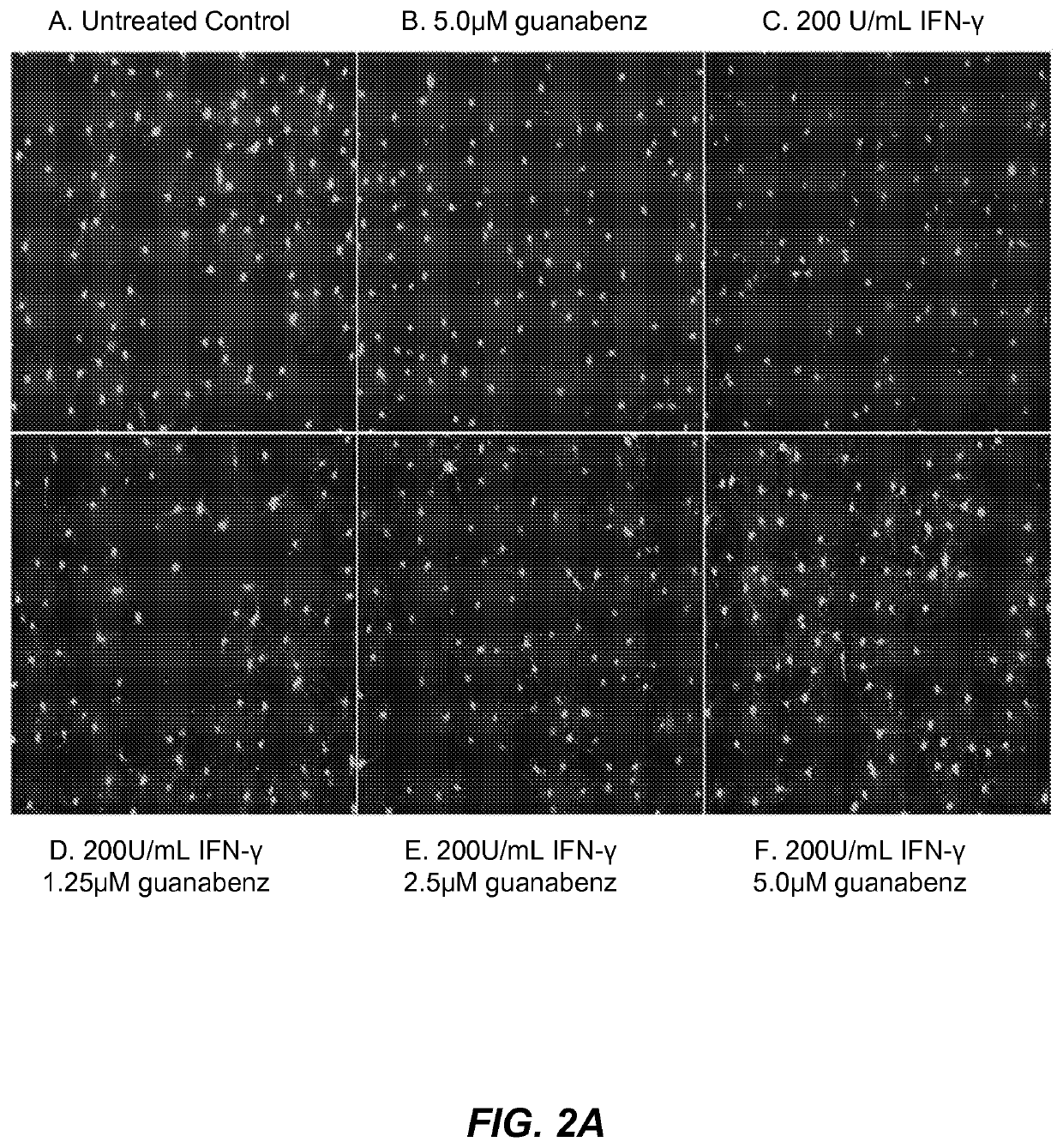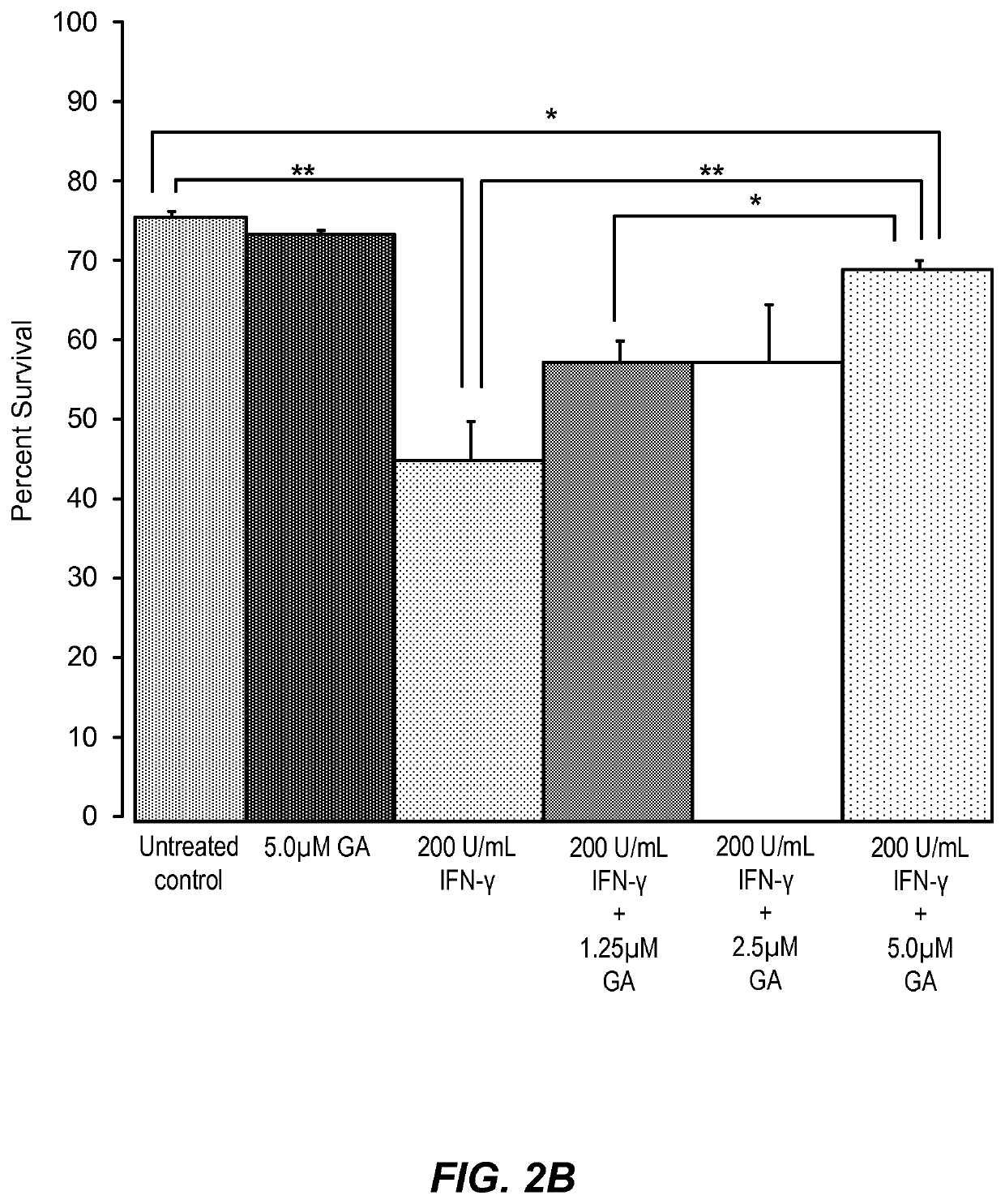Treatment of demyelinating disorders
a demyelinating disorder and demyelinating disorder technology, applied in the field of demyelinating disorders, can solve the problems of affecting the normal processing of affecting the normal functioning of the er, and affecting the er's ability to properly process secretory and/or membrane proteins, so as to/or symptom, delay the onset of onset, and reduce the severity of relaps
- Summary
- Abstract
- Description
- Claims
- Application Information
AI Technical Summary
Benefits of technology
Problems solved by technology
Method used
Image
Examples
example 1
[0190]guanabenz protects differentiating rat oligodendrocyte precursor cells (drOPCs) against interferon-γ induced cell death (FIG. 2A). Interferon-γ is an inflammatory cytokine that is thought to contribute to multiple sclerosis exacerbations, therefore, treatment of cultured cells of the oligodendrocyte lineage with interferon-γ provides a useful cellular model of MS-related inflammation. drOPCs were isolated and purified to >95% homogeneity from 6-7 day old Sprague-Dawley rat cortices by immunopanning as previously described (Chan et al. 2004 Neuron 43:2; 183-191). Briefly, rat cortices were extracted, diced, and digested with papain at 37° C. Cells were then triturated and resuspended in panning buffer containing insulin, then sequentially immunopanned at room temperature on three plates containing Ran-2, GalC, and O4 antibodies from hybridomal supernatant. The remaining O4+GalC− OPCs were removed from the plates with trypsin, resuspended in growth media, and seeded at 37° C. on...
example 2
[0191]guanabenz protects differentiating rat oligodendrocyte precursor cells (drOPCs) against interferon-γ induced apoptosis (FIG. 3A). Cells were isolated as described previously and plated in chamber slides at 20,000 cells / chamber. Cells were then treated with the same IFN-γ and guanabenz protocol as described previously, then subjected to a TUNEL assay. Treatment with IFN-γ alone caused a significant increase in apoptosis (as indicated by the increased numbers of green fluorescent cells), but co-treatment with 5.0 μM guanabenz reduced IFN-γ induced apoptosis.
[0192]FIG. 3B illustrates the quantitation of the experiment in FIG. 3a. Treatment with IFN-γ alone caused a significant (2-3 fold) increase in apoptosis compared to control cells, but co-treatment with 5.0 μM guanabenz reduced IFN-γ induced apoptosis by about 87.5% compared to IFN-γ alone. Error bars represent mean±SEM for an N=3 / group (*p<0.05, **p<0.005, ***p<0.0005)
example 3
[0193]immunohistochemical analysis of myelin basic protein and toluidine blue staining demonstrates that guanabenz preserves myelin fibers and neuronal cytoarchitecture in ex vivo cultured cerebellar slices (FIG. 4). Briefly, cerebellar sections were prepared from 6 day old Sprague-Dawley rat pups. Whole brains were extracted and embedded in 2% agarose in 1×PBS before cerebellar sections, including brain stem, were sectioned at a thickness of 300 μm via vibratome. Two to three sections were collected per well and grown in growth media with Fungizone. Sections were then switched to heat inactivated growth media and treated with 100 U / ml IFN-γ and or guanabenz for seven days, with half the volume of media, including treatments, refreshed daily. Sections were then stained for myelin-basic protein (A-E) and toluidine blue (F-H), used to visualize myelin and neuronal cytoarchitecture. Untreated sections exhibit long, intact myelin fibers, while IFN-γ treated sections exhibit fragmented s...
PUM
| Property | Measurement | Unit |
|---|---|---|
| weight percent | aaaaa | aaaaa |
| temperature | aaaaa | aaaaa |
| thickness | aaaaa | aaaaa |
Abstract
Description
Claims
Application Information
 Login to View More
Login to View More - R&D
- Intellectual Property
- Life Sciences
- Materials
- Tech Scout
- Unparalleled Data Quality
- Higher Quality Content
- 60% Fewer Hallucinations
Browse by: Latest US Patents, China's latest patents, Technical Efficacy Thesaurus, Application Domain, Technology Topic, Popular Technical Reports.
© 2025 PatSnap. All rights reserved.Legal|Privacy policy|Modern Slavery Act Transparency Statement|Sitemap|About US| Contact US: help@patsnap.com



